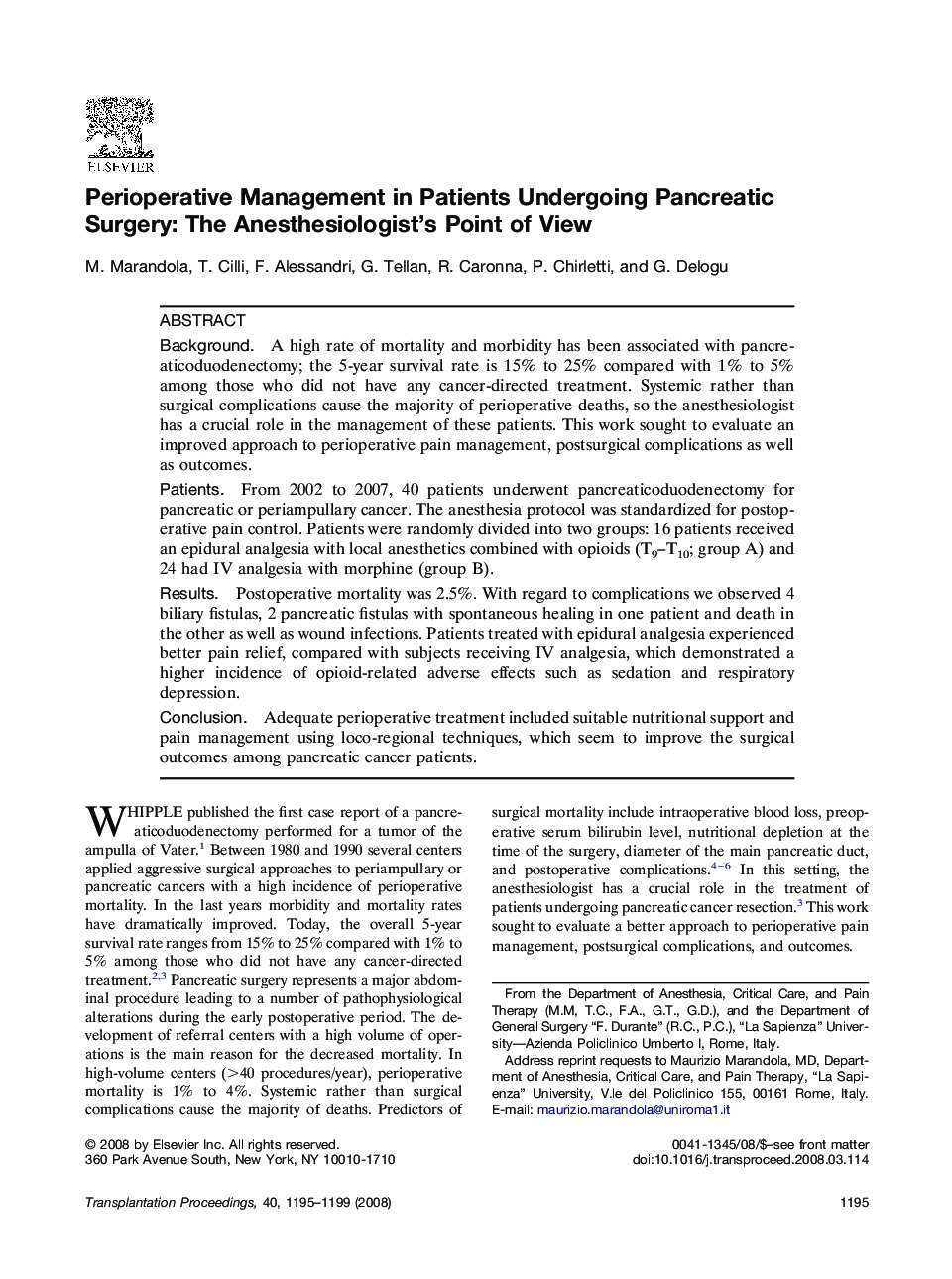| Article ID | Journal | Published Year | Pages | File Type |
|---|---|---|---|---|
| 4262139 | Transplantation Proceedings | 2008 | 5 Pages |
BackgroundA high rate of mortality and morbidity has been associated with pancreaticoduodenectomy; the 5-year survival rate is 15% to 25% compared with 1% to 5% among those who did not have any cancer-directed treatment. Systemic rather than surgical complications cause the majority of perioperative deaths, so the anesthesiologist has a crucial role in the management of these patients. This work sought to evaluate an improved approach to perioperative pain management, postsurgical complications as well as outcomes.PatientsFrom 2002 to 2007, 40 patients underwent pancreaticoduodenectomy for pancreatic or periampullary cancer. The anesthesia protocol was standardized for postoperative pain control. Patients were randomly divided into two groups: 16 patients received an epidural analgesia with local anesthetics combined with opioids (T9–T10; group A) and 24 had IV analgesia with morphine (group B).ResultsPostoperative mortality was 2.5%. With regard to complications we observed 4 biliary fistulas, 2 pancreatic fistulas with spontaneous healing in one patient and death in the other as well as wound infections. Patients treated with epidural analgesia experienced better pain relief, compared with subjects receiving IV analgesia, which demonstrated a higher incidence of opioid-related adverse effects such as sedation and respiratory depression.ConclusionAdequate perioperative treatment included suitable nutritional support and pain management using loco-regional techniques, which seem to improve the surgical outcomes among pancreatic cancer patients.
